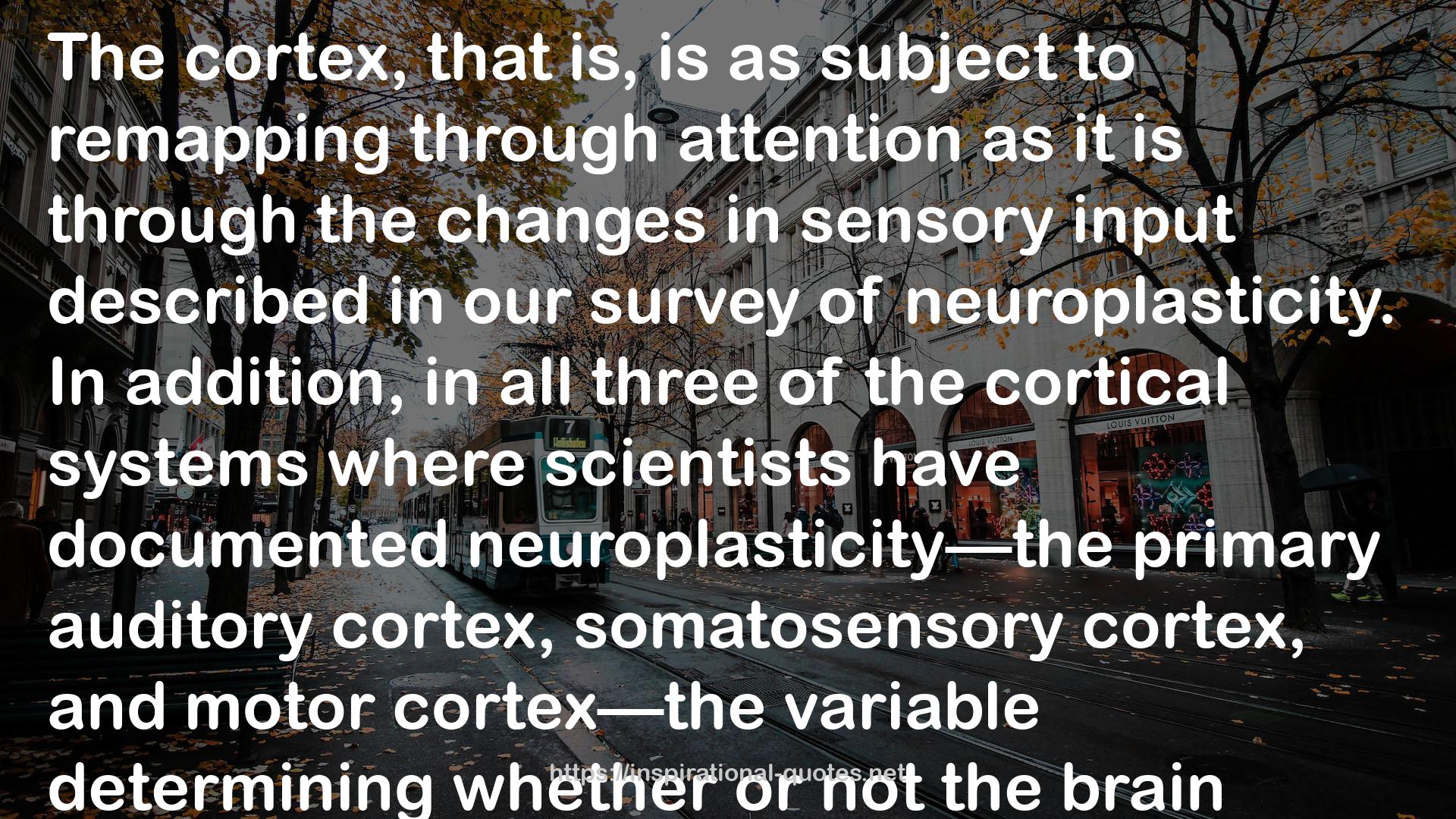" The cortex, that is, is as subject to remapping through attention as it is through the changes in sensory input described in our survey of neuroplasticity. In addition, in all three of the cortical systems where scientists have documented neuroplasticity—the primary auditory cortex, somatosensory cortex, and motor cortex—the variable determining whether or not the brain changes is not the sensory input itself but, crucially, the attentional state of the animal. In 1993 Merzenich showed that passive stimulation alone simply did not cut it. He and his students repeatedly exposed monkeys to specific sound frequencies. When the monkeys were trained to pay attention, the result was the expected tonotopic reorganization of the auditory cortex: the representation of the repeatedly heard frequency expanded. But when the monkeys were distracted by another task, and so were paying little or no attention to the tones piped into their ears, no such tonotopic expansion occurred. Inputs that the monkey does not pay attention to fail to produce long-term cortical changes; closely attended behaviors and inputs do. Let me repeat: when stimuli identical to those that induce plastic changes in an attending brain are instead delivered to a nonattending brain, there is no induction of cortical plasticity. Attention, in other words, must be paid. "
― Jeffrey M. Schwartz , The Mind and the Brain: Neuroplasticity and the Power of Mental Force
